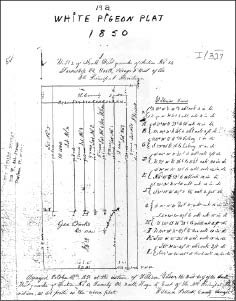Discover rewarding casino experiences. 
|
That mill replaced a saw mill there (Sec. 13) and the grist mill in turn was replaced later also. It had the well-earned reputation of being the slowest grist mill ever conceived. It was said that the grinding was so slow that a person waiting for his grist could eat the entire ration, all except the toll before it was done. That’s slow! A post office there was to be New Clyde. A saw mill was first built where Brothwell’s Mill later worked butler Marble and son, Levi, operated the mill but Marble went off to Oregon where he died. Hugh Hollinshead, a millwright, and Henry Daniels had come in 1838, too. Next in time was William Hiddleson and who had a carding machine in connection with the mill. Information given makes it sound like it was separate from the actual water powered mill unlike the carding machine at New Salem, Illinois where the large, slanted carding mill was turned by the wheel of the mill. The carding machine apparently was in the house because the writer talked about the smell of wet wool being so obnoxious and the ticks on the sheep so plentiful that a child was assigned to pick off the ticks and throw them into the fireplace to be burned. Those weren’t the good ol’ days! This mill (Sec. 26) was long known as Hough’s Mill, according to the 1877 county history. It’s use continued under a succession of owners/operators such as the Beyers, a Shriner and lastly, George and John Appel by which name it is still known and it still stands though unused since 1943. In 1888 the miller, Amos Grater, could not be hired for the season unless the owner installed modern rollers such as the large commercial mills had. The grindstones were too old fashioned. Either come up with roller mill or no miller of experience. It was done. Water Works Park in Morrison displays a grindstone taken from Hough’s Mill in 1853. Little Rock Mill (Sec. 21) came next with Joseph Milnes, builder. Those mills in Clyde suffered all the hardships known to the pioneers ... Flooding out of the dams, broken equipment, rats eating the grain (ferrets called upon to catch the rodents), low prices, the competition of corporate mills are what drove the local miller out of business. For two thousand years sowing and harvesting was done by hand and then in the 1830’s a few basic implements were seen. By the 1840’s agricultural implements came on the scene; some invented right here in the Heartland to be immediately improved upon by farmers tinkering with their own ideas. It was an exciting time. By the 1850’s the population of Clyde which until then had been sparse, began to rapidly increase. Thus the need for mills of both kinds, businesses here and there. Some latent spirit was unleashed from the earth, perhaps, by the plow stirring the till then untouched prairie; the spirit giving the pioneers ideas and energies. Unknown till Zachariah Dent, born in Norfolk County, England in 1806 came to Canada in 1832 where he worked as a store clerk at New Market. In 1839 during the Patriots War he came to Whiteside County to the two townships featured here where a few scattering of hamlets waiting to become cities sought development. Where he settled became known as Dent’s Grove but he applied for a post office to be named Watertown which, of course, was already taken. He asked for others such as Waterford but was turned down again. The postal department chose a name by the then most technological method—drawing alphabetized blocks from a box—CLYDE. Another system suggested was that the English and Scots who had numerously come from Canada referred to the bonnie River Clyde in their original homeland. Either suggestion is a possible choice and remains in township name at least, Clyde. At Brothwell’s Mill (Stinemeyer’s) the postal department came up with the name New Clyde. Samuel Wressel settled around 1838 also having been born in Lincolnshire, England but migrated to Canada and was part of the Patriot’s War also. He had been shot in one of the exchanges as were other of the migrants who arrived, some with disabilities ever after. He moved to live among the Indians at what became known as White Pigeon (Sec. 14). He had sold his first claim to Z. Dent for $100 but was happy with the second site where he lived until age eighty. Among other of the “Canadians” were the Blue family, Beswick, Richardson, Daniel, Curie and the Wilson brothers, John and William, the latter marrying Jane Blue. They became the grandparents of the fortieth president of the United States, Ronald Wilson Reagan. His mother was Nellie Wilson Reagan. Although most of us do not know of White Pigeon today it was platted as the illustration here indicates in 1850. Description says that it had ten lots of five, six, eleven and twenty acres in size, surveyed in October, 1850 by county surveyor, William Pollock with the assistance of William Wilson ... The west half of the southwest quarter of Section 14. Witness trees were used as markers of the boundaries, a common practice such as black oak, 2 feet (diameter); Bur Oak, 10 inches; Hickory, 8 inches and 13 feet. At this time frame houses began to be put up to replace log cabins and could be constructed out on the prairie instead of in the shelter of the timbers. It was beginning to look civilized! By 1876, White Pigeon had an official post office, housed in the usual way, a combination house/store and in after years the slotted shelves still hung in a southeast room with a bay window. In October (31) of 1902, however, those myriad tiny neighborhood post offices were no more what with the coming of Rural Free Delivery (RFD). The postal address then became Coleta, a subsidiary of Sterling. Walt Pierce bought the store in 1908 and traveled to the Sterling Wholesale Company for stock for the business and to pick up the mail. As he returned home he would drop the mail off at the patron whose address was part of the delivery, sometimes, too, dropping the next patron’s post to be delivered by the first addressee. It was a neighborly gesture but hardly one the postal department would condone today!! Midway between the mill at Stinemeyer’s and the Appel Mill was the Bechtel Mill, a sawmill put up by Ephraim Bechtel who built an oak frame dam and a bypass of the dam, a race, that supposedly provided more power. Much local walnut lumber was cut here and, coincidentally there is said to be much walnut furniture of old in the area. A fact unknown to most is that Mrs. Bechtel was buried at her request to the east of the house because she had so enjoyed the view out her east kitchen window and desired that view into the eternity. Jesse Hill, first citizen in the northern tier of townships, is also buried on the prairie at his request, hoping that his several children would join him at that spot. All of them moved away. Of the several mills that were constructed along the streams and creeks and rivers of Whiteside only one remains in the Clyde and Genesee neighborhood, the Appel Mill which, too, became known as Malvern Milling Co. and was popular for its large variety of flours, ground grains and its fine quality. It ceased operation in 1943 but the building remains. At Rock Creek in Morrison the Ammon Mill is a beautiful landmark and will be treated here in the future. There were other settlements in the Clyde-Genesee area such as Franklin Corners, Prospect Grove, etc. but time and space does not allow their inclusion now but can be done in future also. As well as Crum’s store; yes, that was an identity which was also Figi, Clayton (for a minute), and then became Coleta. These places were part of our growing up days accomplished by unique individuals who endured terrible hardships, making sacrifices we can’t imagine now. It’s sometimes difficult to picture that our ancestors, the first settlers, were human beings, living, breathing but facing challenges unknown to us now. They achieved the “top priorities,” wood and water, unequalled in most other places. And had the freedoms of opportunities and to “espouse the causes they strived towards.”
|






